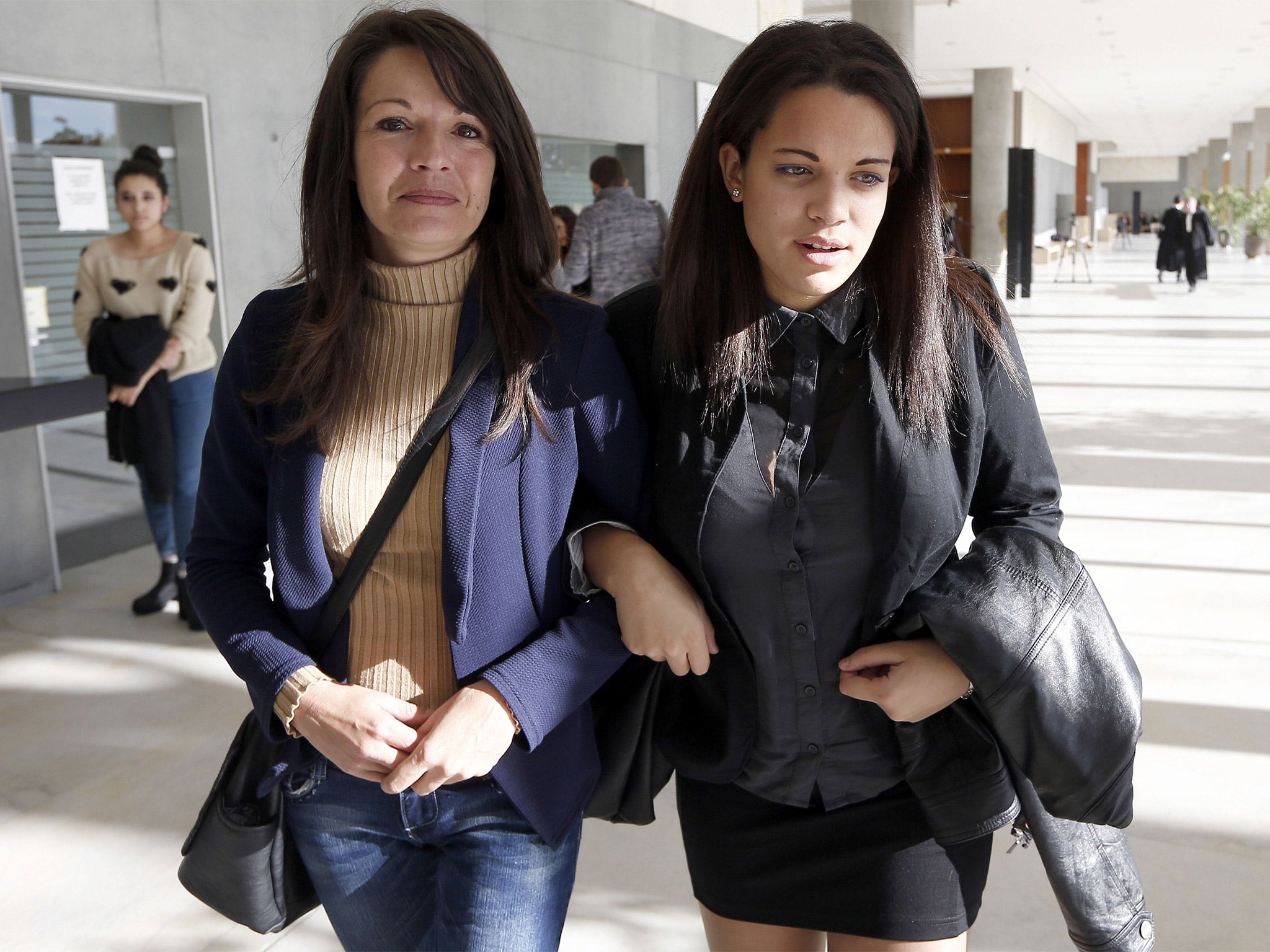French families sue clinic and staff for €12m over suffering caused by cot blunder that saw baby girls swapped at birth
The changelings were 10 years old before the mistake was revealed

Sophie and Manon Serrano might be taken for sisters. The mother, 38, and daughter, 20, are the same height. Both have long, dark hair. They are the best of friends.
They walked arm in arm into a court in the south of France this week to complain that they should never have known each another. When Manon was 10 years old, she found that her mother was not her mother after all. Her “real” mother was living 20 miles away with a little girl whose “real” mother was Sophie.
In July 1994, a few days after their birth, the two girls were placed in the same cot at a maternity clinic in Cannes. After treatment for jaundice, they were returned to the wrong mothers. The changelings were 10 years old before the mistake was revealed.
The “other” baby and her “parents” were also represented in court in Grasse this week but they requested anonymity. Each young woman is cherished by her accidental foster family. Neither family wants to swap daughters.
They are, though, suing for €12m (£9.4m): €2m for each daughter, the rest for their families. They say the maternity clinic and heath staff involved – or at least their insurance companies – should pay exemplary damages for their two decades of emotional suffering. Judgment is expected in February.
The story sounds like a film script. And, indeed, one of the most repeated movies on French TV, La Vie est un Longue Fleuve Tranquille (Life is a long quiet river), tells an almost identical story. It was made in 1988, six years before Manon and her “twin” were born on 4 July 1994.
In the film, the two babies come from radically different social backgrounds in the industrial north of France. The real story told in court this week was further complicated by race.
Manon Serrano’s birth parents are from Réunion, a French island in the Indian Ocean. Although Manon looks strikingly like her non-biological mother, she has darker skin.
Growing up in an all-white neighbourhood near Nice, she was bullied and teased and nicknamed “the Arab”. Her “father” accused her mother of being unfaithful and left when Manon was three.
Seven years later he demanded a paternity test, which showed that he was not Manon’s father – and that Sophie was not her mother. The Cannes clinic discovered in its records that Manon had been placed in the same cot as another baby girl to be treated for jaundice. The other family was traced and DNA tests confirmed the mistake.
In court this week lawyers representing the clinic (now defunct) and its insurance company blamed the two mothers for the blunder.
How could they not have recognised their own babies, they asked. Sophie says she did complain at the time that her baby appeared darker-skinned and that her hair was longer. She said the nurses insisted that the ultra-violet treatment was responsible.
The court hearing this week was closed to the public but Manon, in earlier comments to the press, sprang angrily to her “mother’s” defence.
“She was young. She had just had a baby,” she said. “She was confronted with a trained nurse. To blame her is out of order. It is inhuman.”
When the mistake was discovered 10 years ago, the two families briefly befriended each another. They saw each other for just over a year but drifted apart. Both girls were terrified at the prospect of having to leave the families they had always known.
“It was disturbing and very bizarre,” said Manon. “You are confronted with a woman who is your biological mother but who is a complete stranger.”
Sophie says that meeting her “real” daughter for the first time was “a moment of joy and a moment of great sadness”.
“I was delighted to see that my biological daughter was loved and thriving,” she said. “And yet I knew that I could not take her away with me. The other mother had the same sense of being torn in two... Of course, I would have loved to have had some kind of mother-daughter relationship with her but that is precisely what was stolen from me.”
Criminal proceedings against the clinic and its staff came to nothing in 2005 because the time limit for legal action had passed. Sophie Serrano brought a civil action in 2010, which the other family agreed to join.
“In 10 years, we have never had the slightest apology from [the clinic and its staff], let alone an admission of responsibility,” Sophie said. “Quite the opposite: they have always insisted that it was our fault.”
Manon Serrano is now in the final year of a management training course.
“I’m very proud of the fact that she has made a success of her studies despite everything,” Sophie said. “We were always close. When I found out what had happened when she was 10 years old, we became even closer.”
Manon says she has no desire to re-establish contact with her biological parents. But she does wear a pendant they gave her. It is shaped like the island of Réunion.
Join our commenting forum
Join thought-provoking conversations, follow other Independent readers and see their replies
Comments